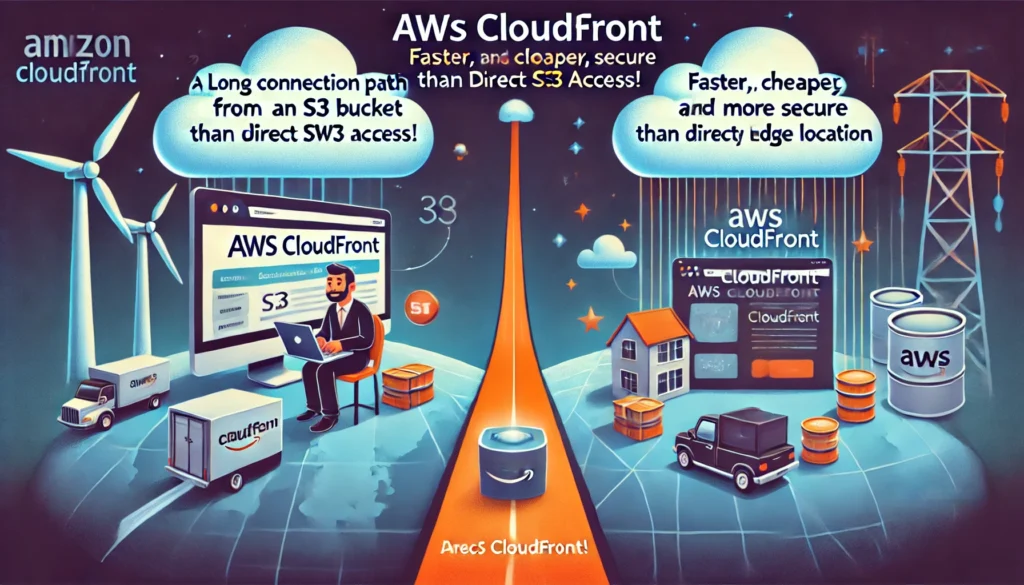Let’s break it down. Imagine you have a website with images, videos, or large files stored in Amazon S3. If users fetch content directly from S3, they will always be requesting it from a specific AWS region—leading to slower load times for users far from that region.
That’s where AWS CloudFront comes in. It acts as a Content Delivery Network (CDN) to speed up content delivery and reduce latency.
How CloudFront Works (vs. Direct S3 Access)
Direct S3 Access (Without CloudFront)
- User requests a file → Request goes to the S3 bucket’s region → File is served from that location.
- Issue: If a user is far from the region, they experience higher latency and slower load times.
S3 with CloudFront (CDN in Action)
- CloudFront has Edge Locations across the world.
- First request: CloudFront fetches the file from S3 and caches it at the nearest Edge Location.
- Future requests: CloudFront serves the file directly from the Edge Location, reducing latency significantly.
Why CloudFront is Faster ?
Global Edge Locations – Your content is cached worldwide, reducing distance-based delays.
Lower Latency – Users get content from the nearest Edge Location instead of an S3 region.
Reduced S3 Load – Repeated requests don’t hit S3 directly, lowering costs and improving efficiency.
Better Security – You can restrict direct S3 access, forcing all traffic through CloudFront.
Compression & Optimization – CloudFront can compress files (Gzip, Brotli), making delivery even faster.
When Should You Use CloudFront with S3?
High-traffic websites that serve static content (images, videos, JavaScript, CSS).
Applications with global users who need fast load times.
Cost-conscious businesses looking to reduce S3 data transfer costs.
Secure environments that need access control, DDoS protection, and encryption.
Conclusion: CloudFront = Faster, Smarter S3 Access
Instead of making every user travel to S3’s region, CloudFront brings S3’s content closer to them—resulting in faster load times, lower latency, and a better user experience.
Are you using CloudFront for your S3 content?
Let me know your experience in the comments below!


